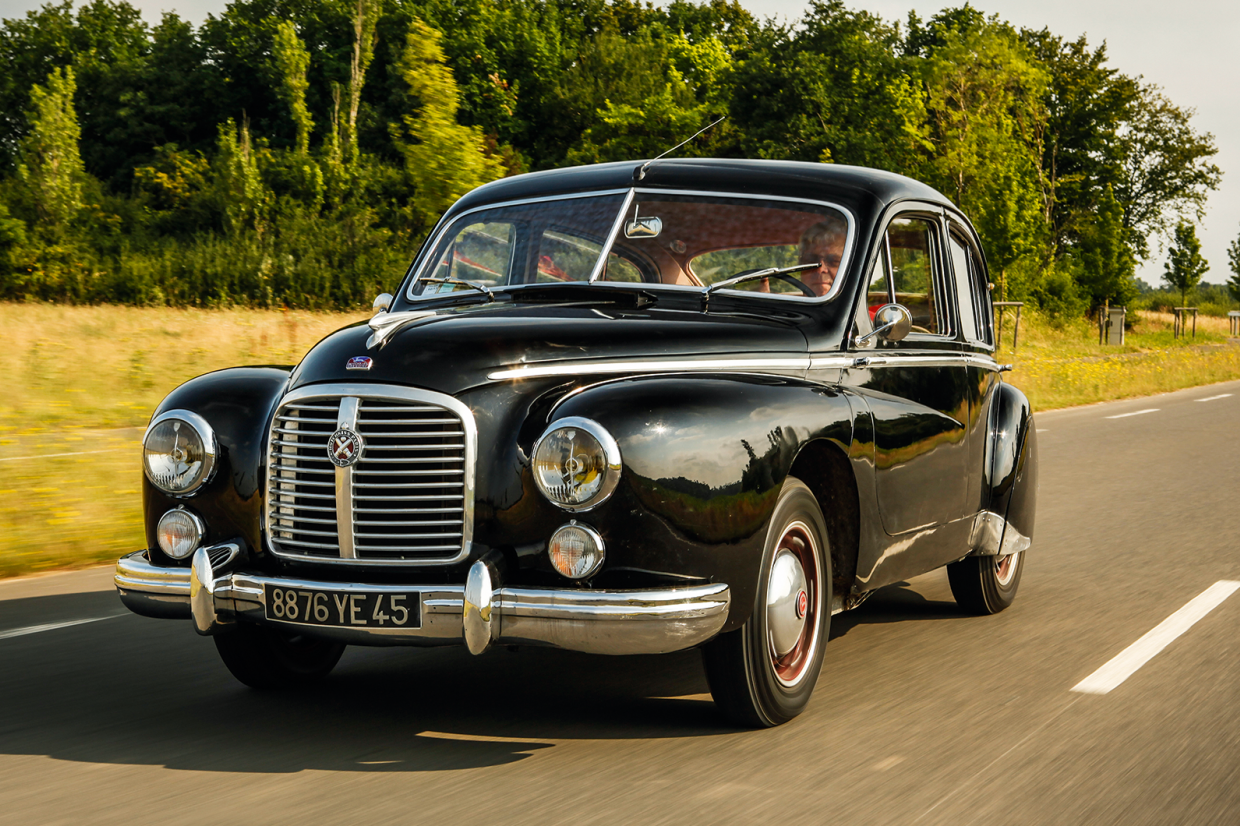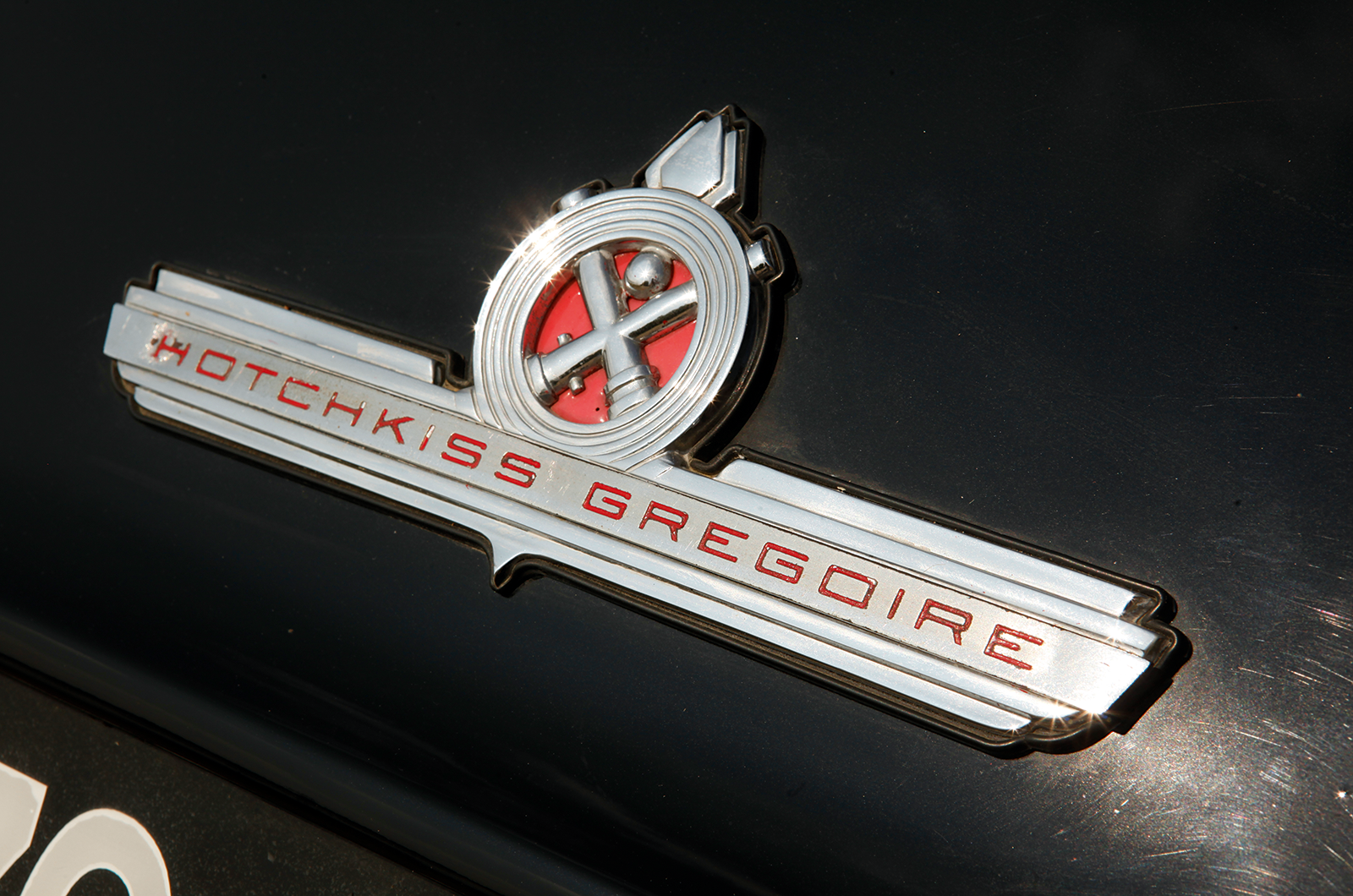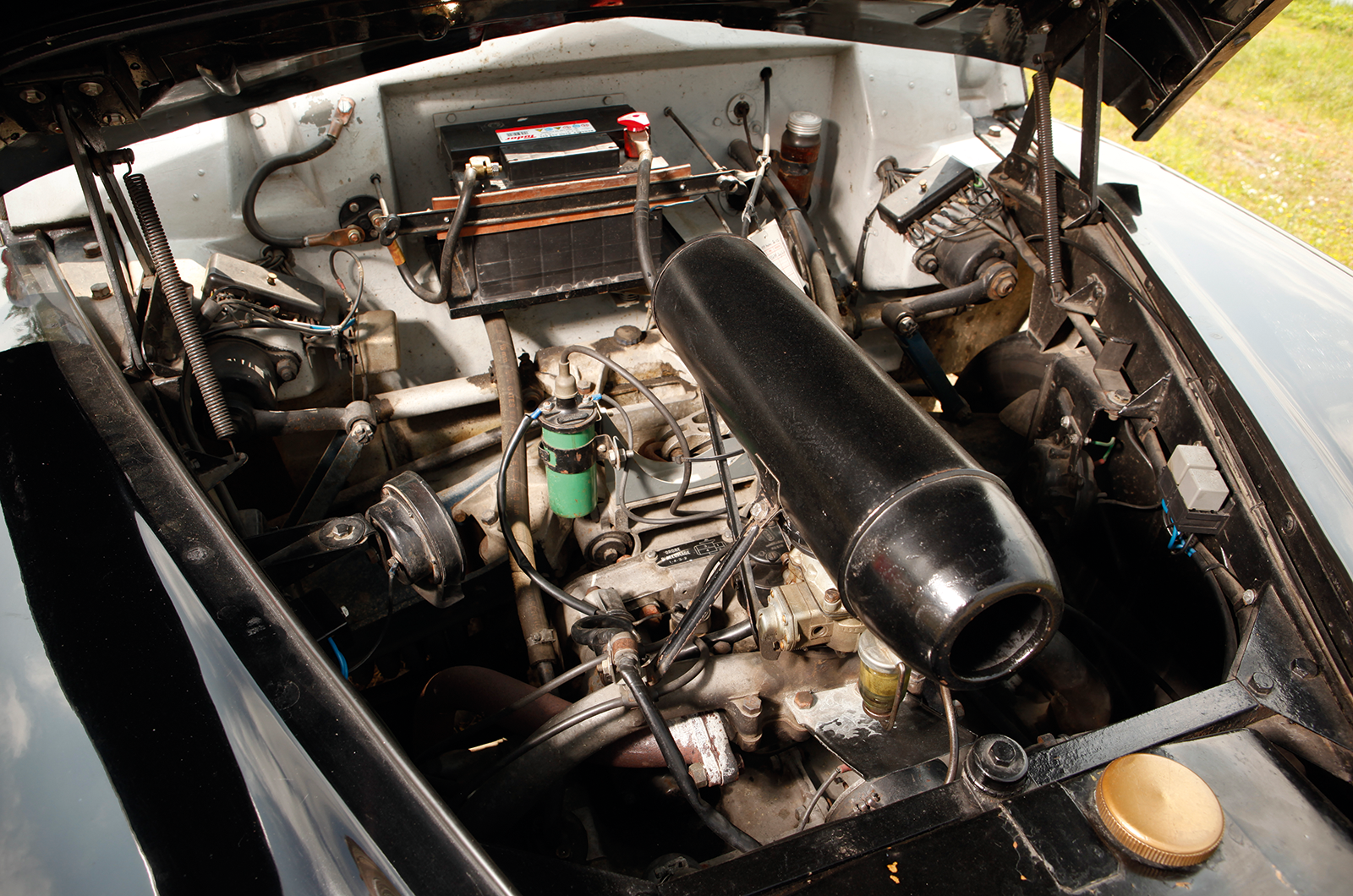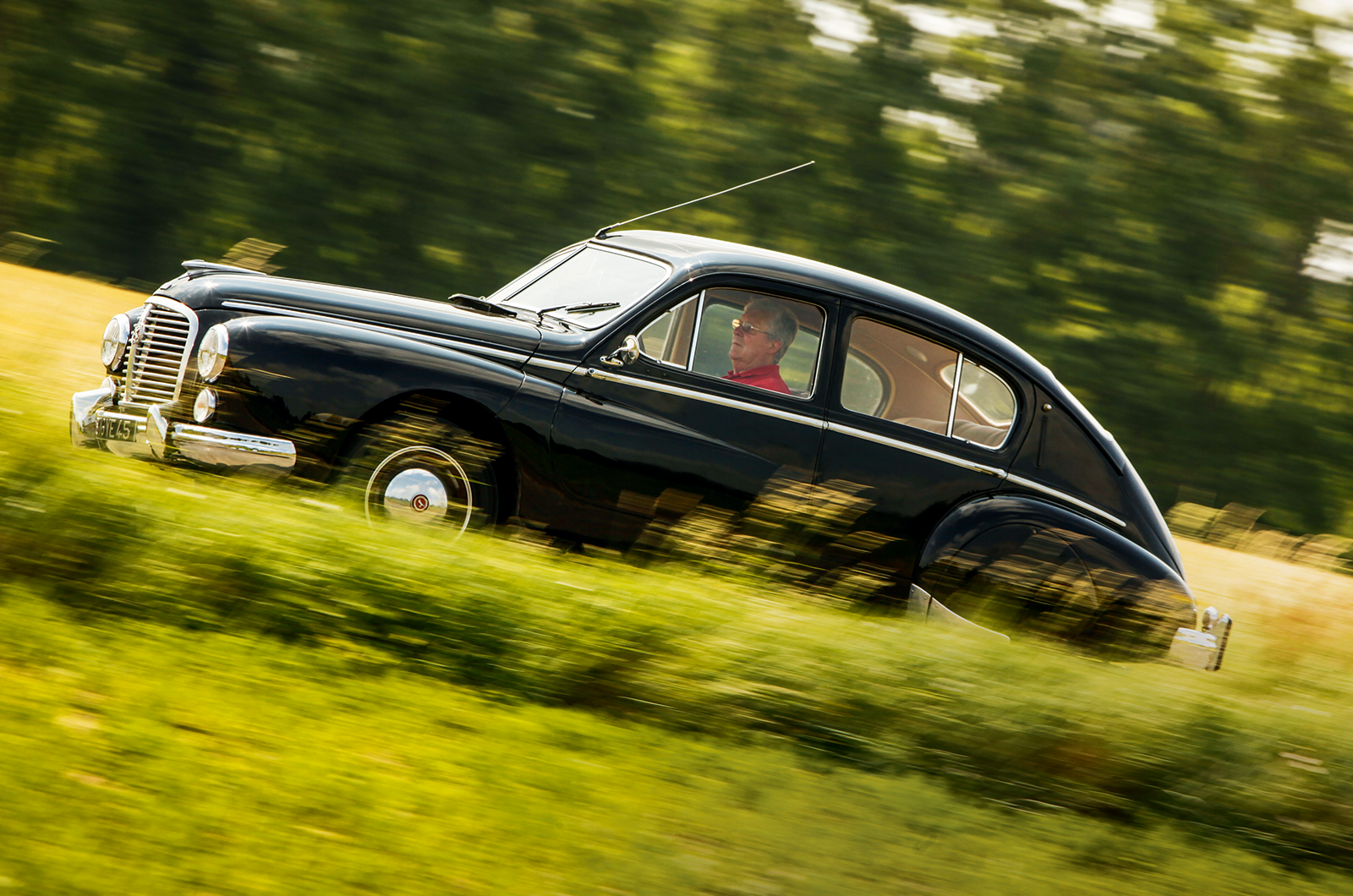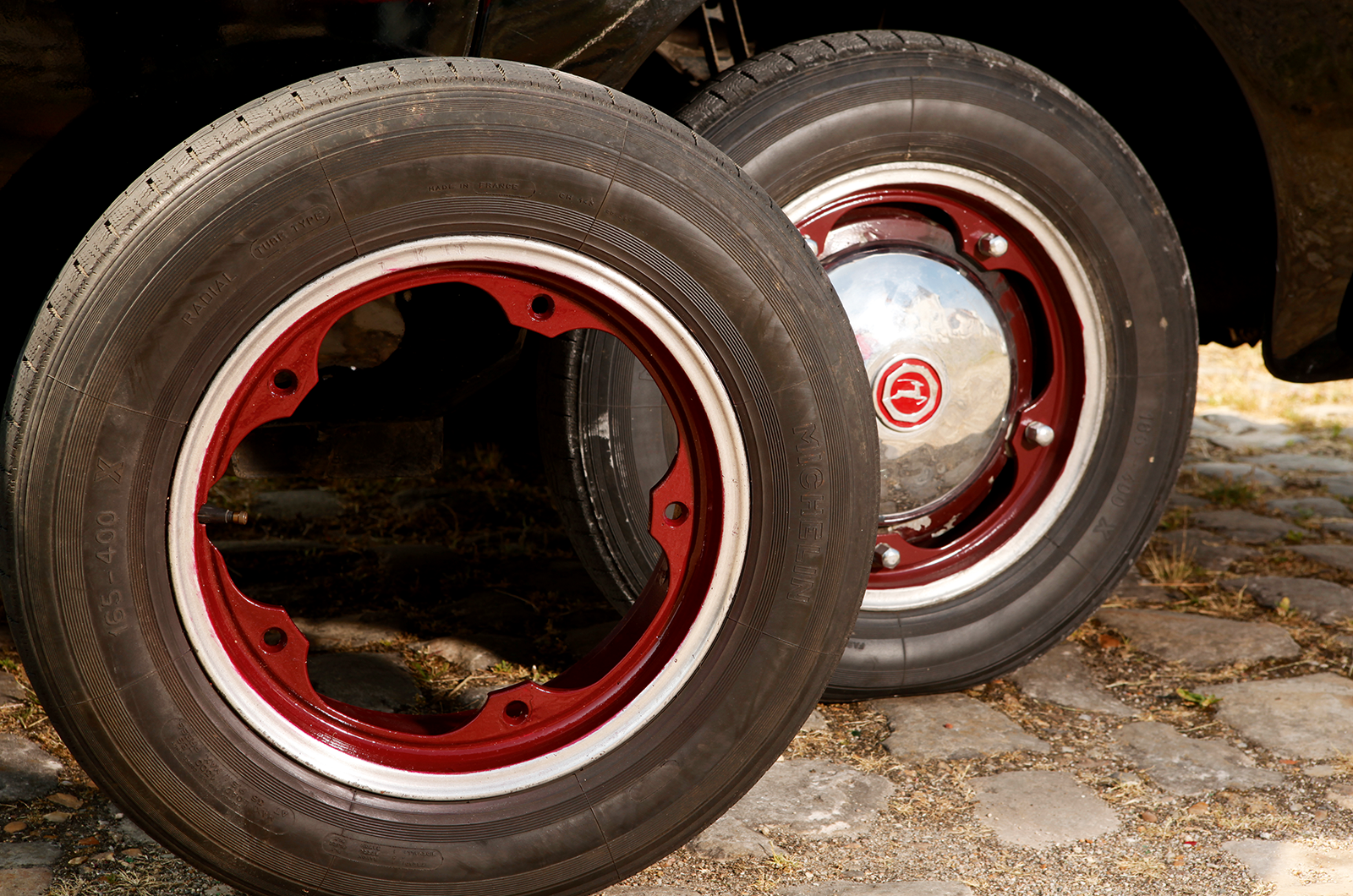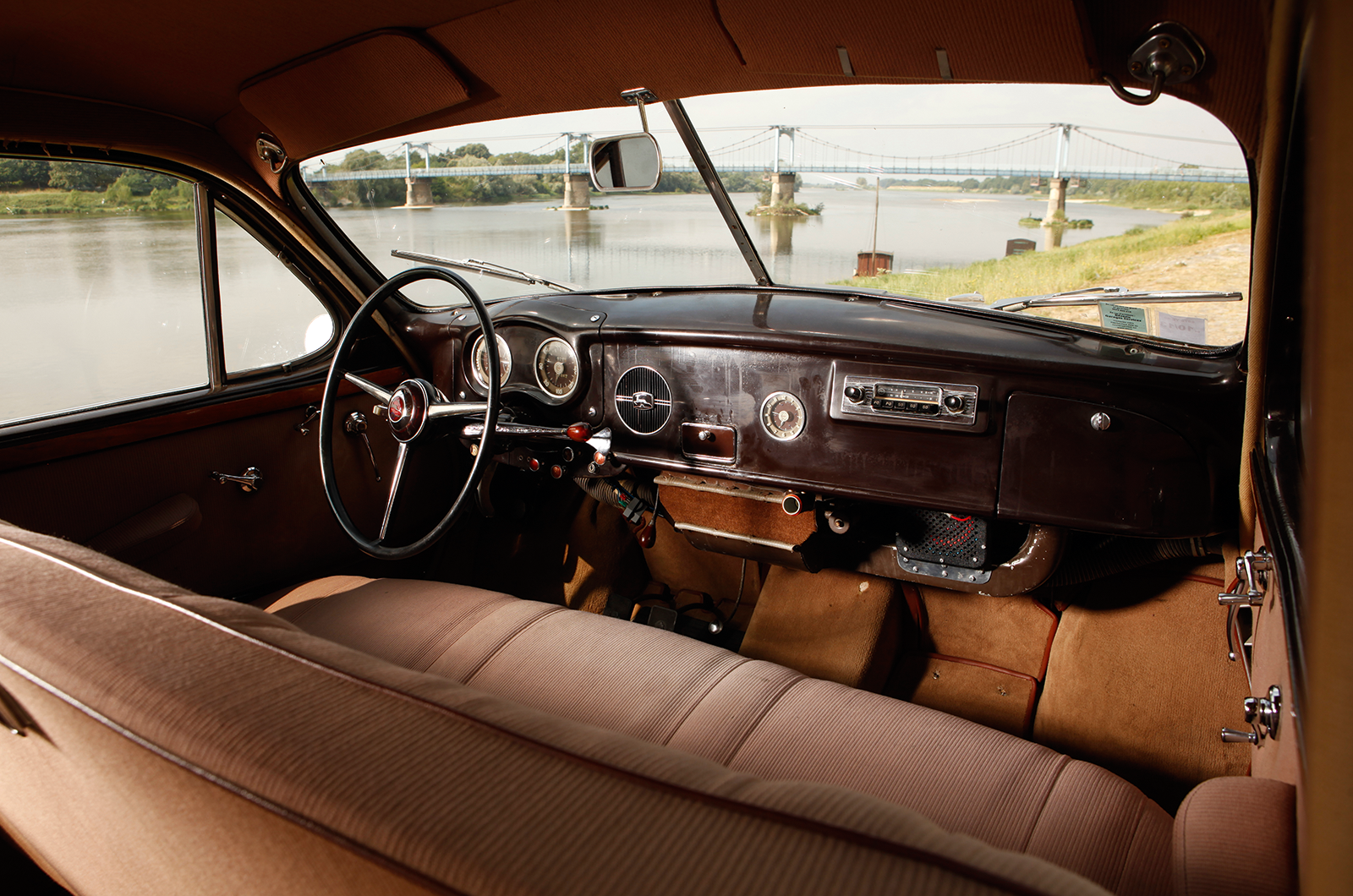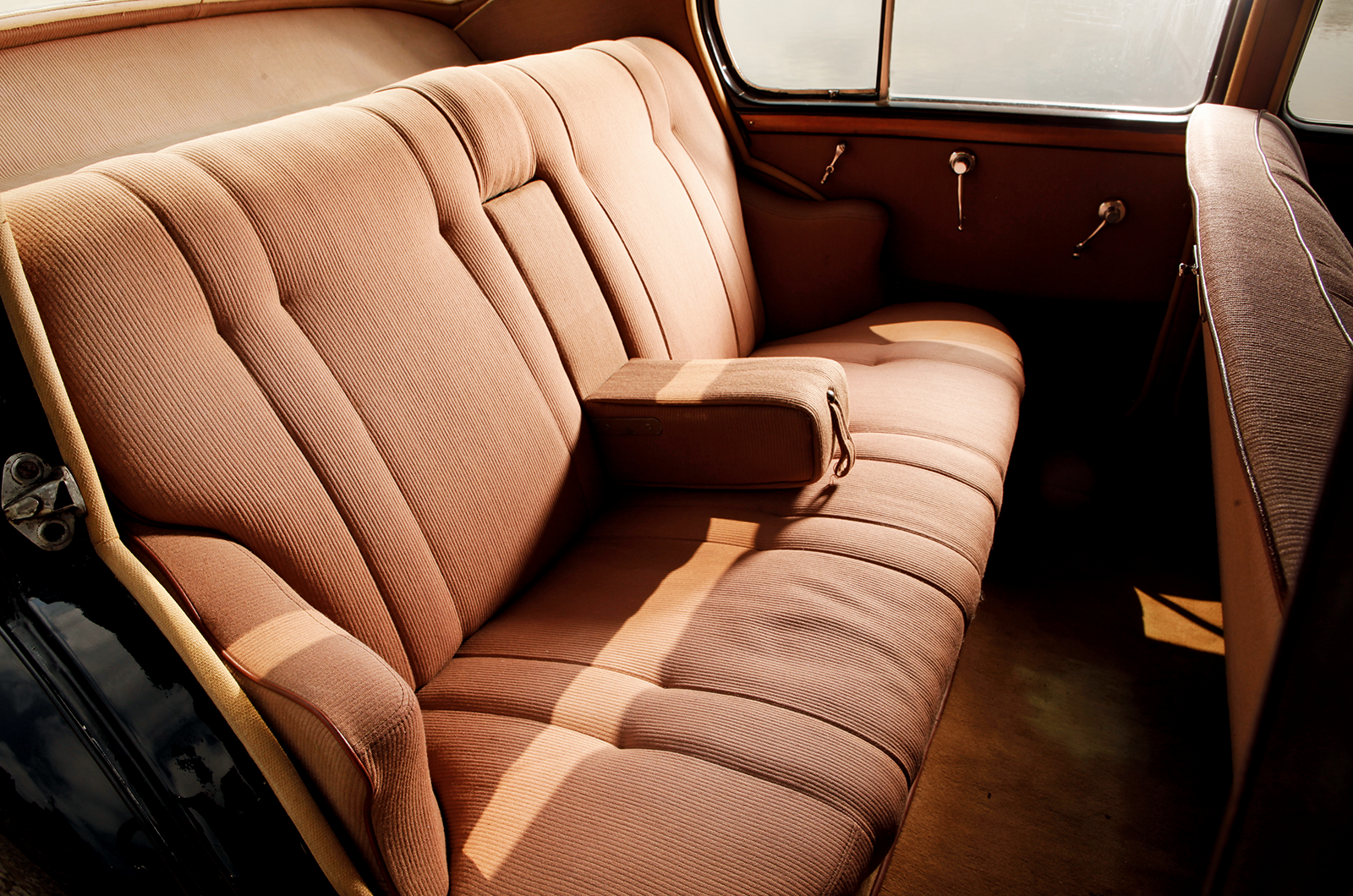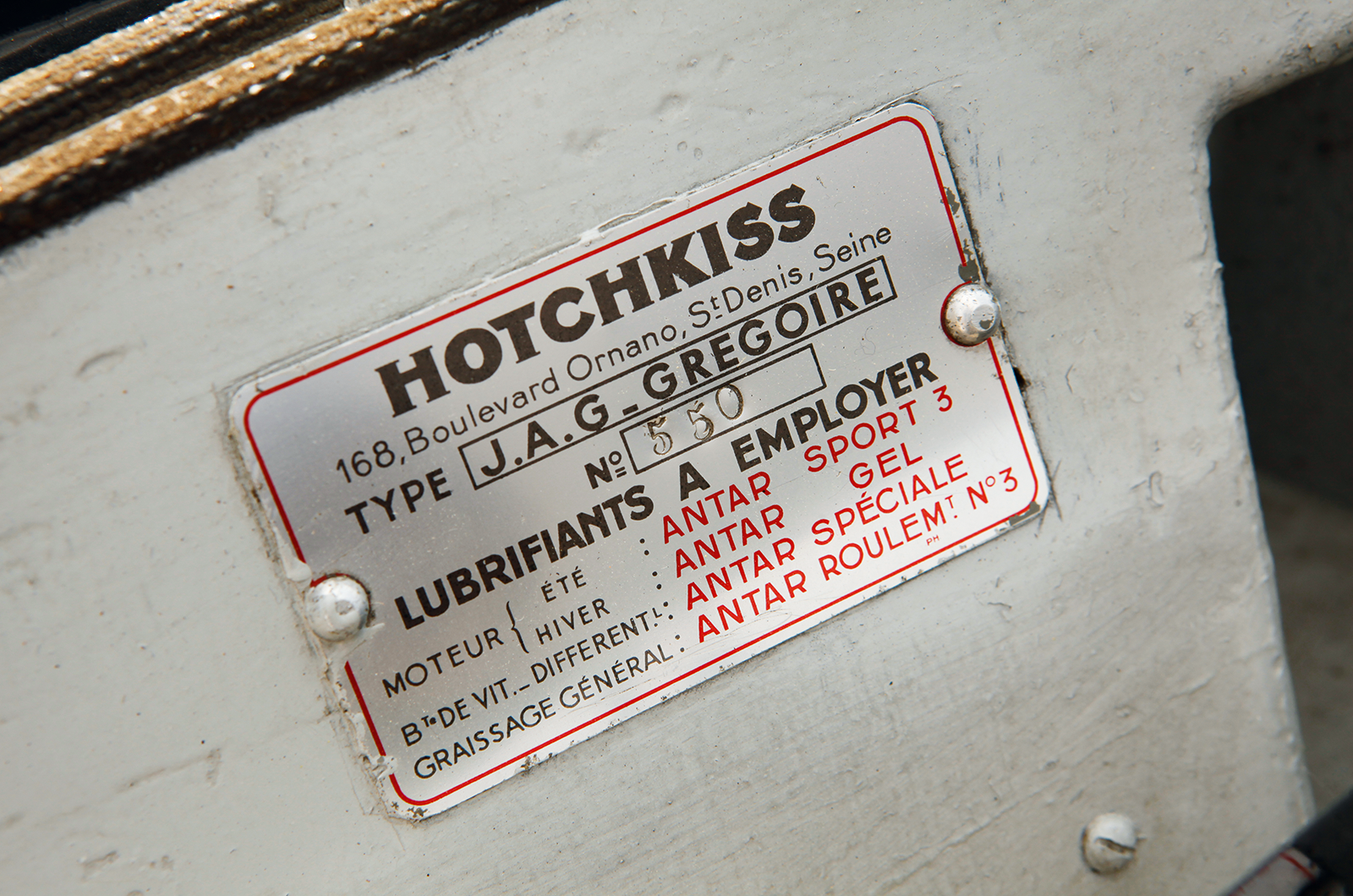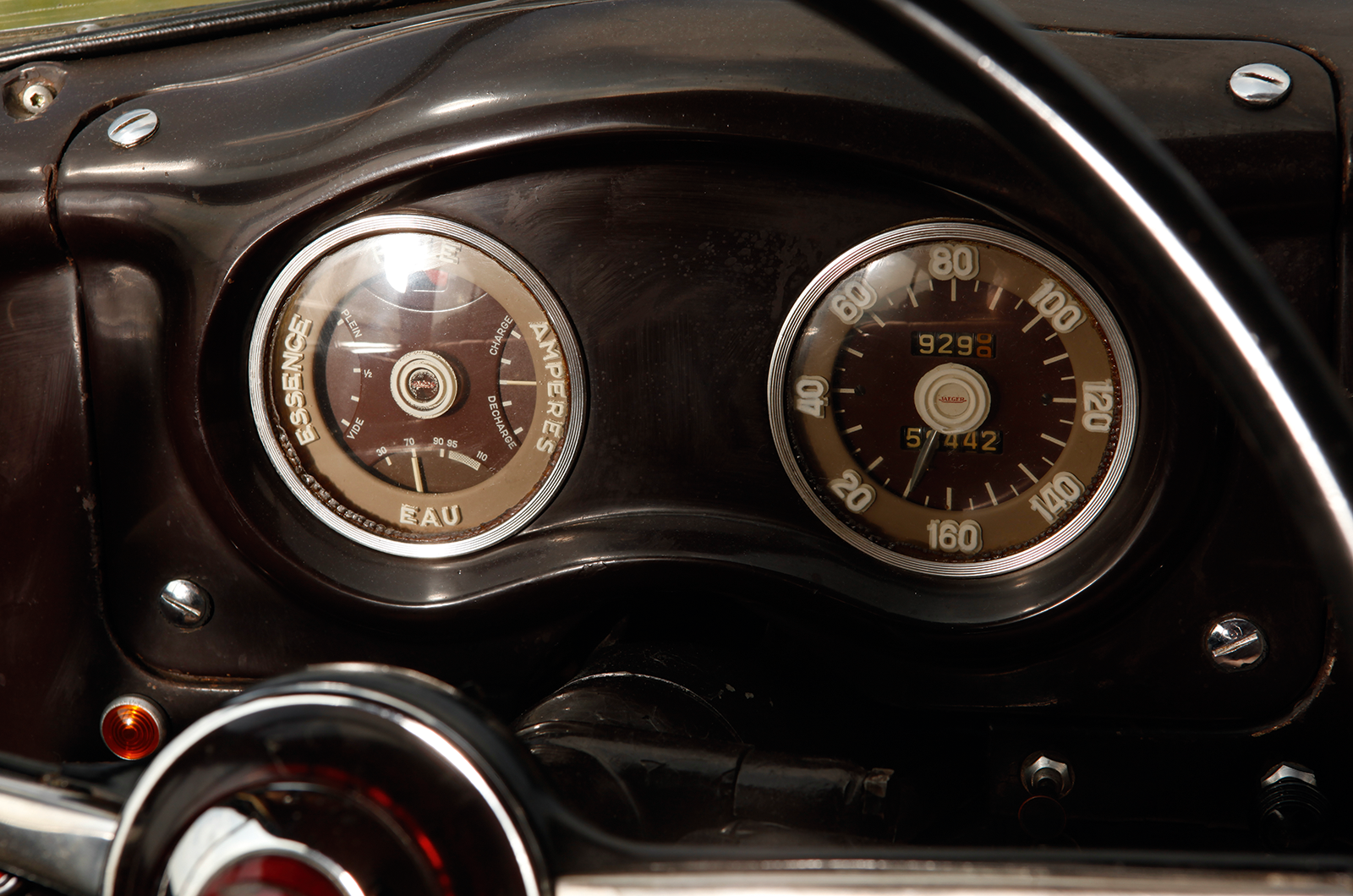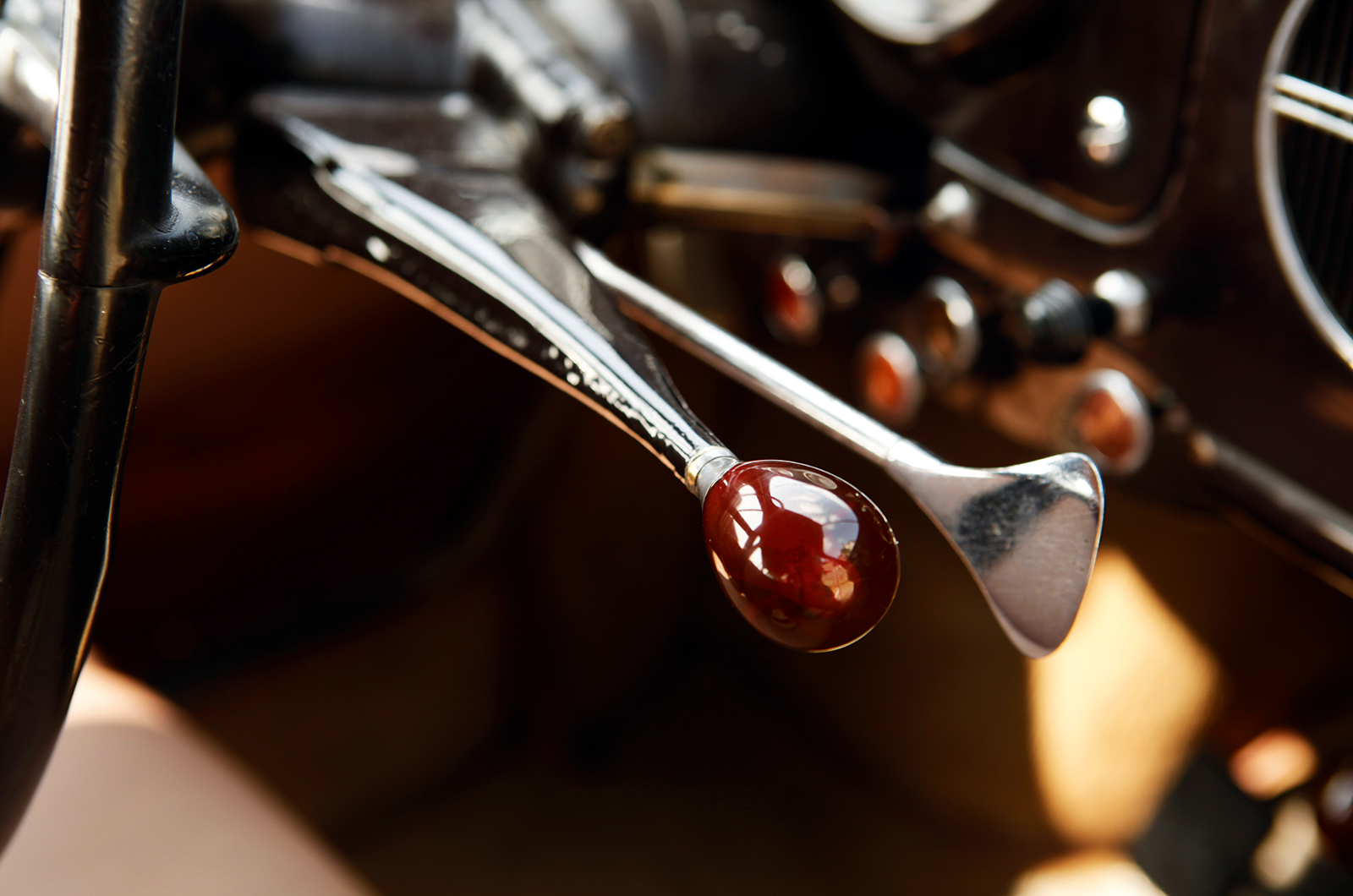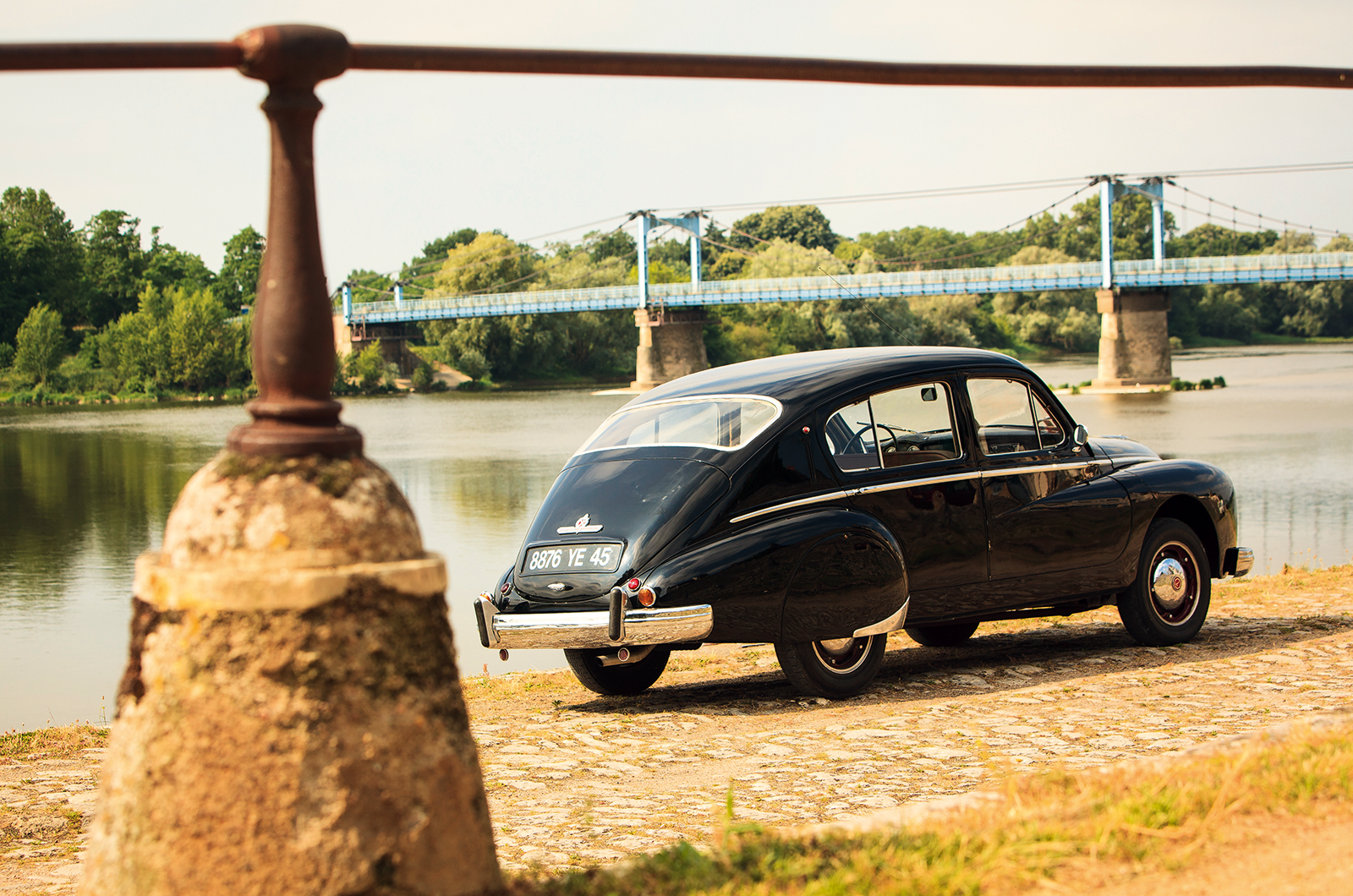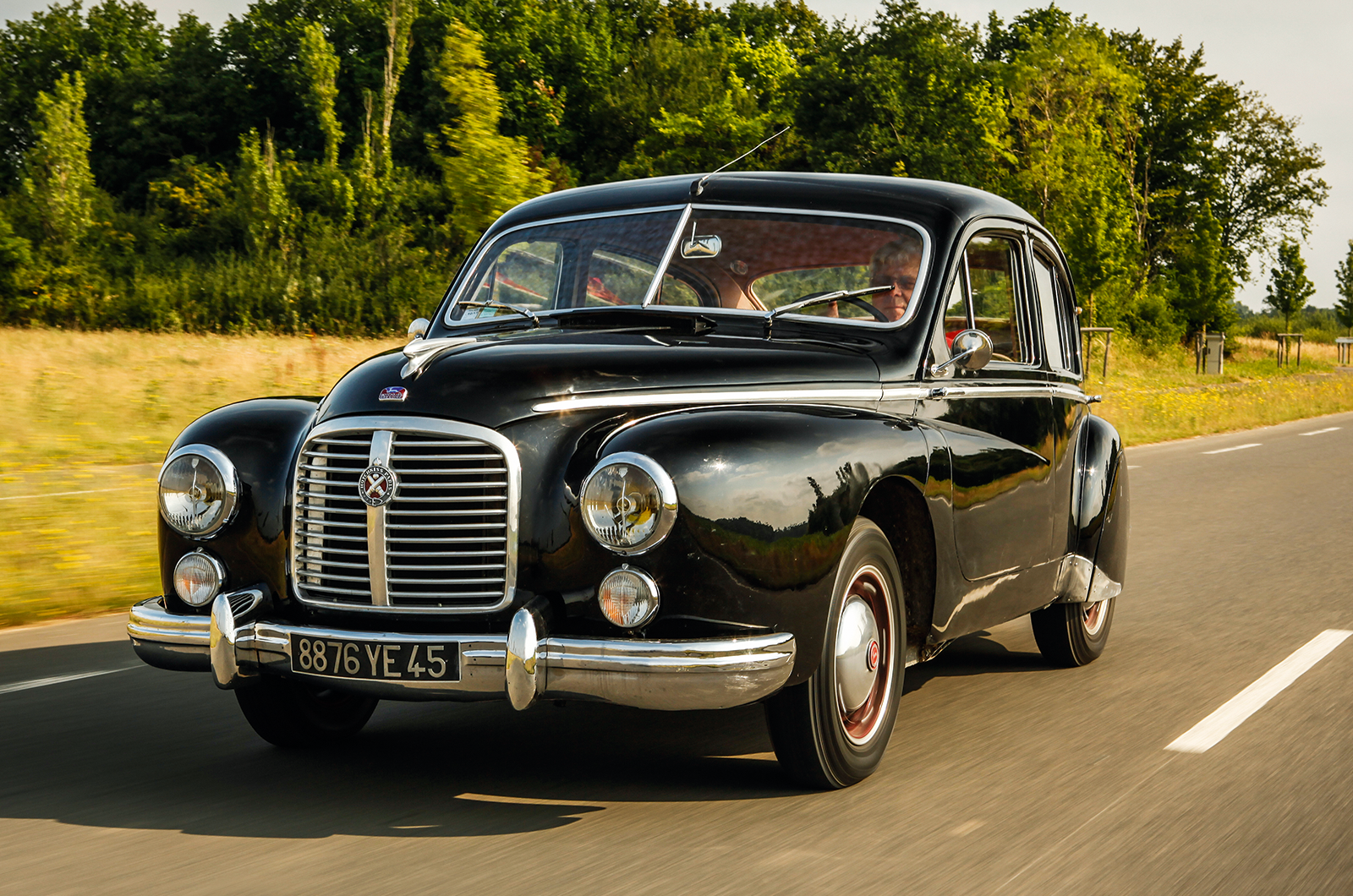Top gear is definitely an overdrive, and third is quite high, so all the acceleration is in second. The Grégoire motors along at 50-60mph, totally at ease, and with an impressive feeling of security.
The column change is good, but demands full depression of the clutch. A separate lever operates a detent for the unsynchronised fourth, set in the same plane as second.
You can muff shifts, but get it right and the action through the ’box is sweet. With a firm but not brutal hand, you let the lever find its own place. Indeed, once you have the knack, it only needs your fingers.
The positive rack steering is not heavy and, with its front-biased weight, the car has exemplary straight-line stability without excessive understeer – even if it keels over and squeals its tyres when thrown into a bend.
The turning circle is also good, a benefit of the Tracta outer CV joints the Grégoire uses.
Thanks in part to the front-biased weight, the Hotchkiss-Grégoire feels very stable
There’s a gentle bobbing from the suspension, even on good roads, and this is amplified by the seat springs. It’s relaxing and rather endearing.
As for the hydraulic brakes, they need a lean but work well. With its soft ride, wide cockpit and vee ’screen, the Grégoire is a friendly old cruiser.
The trouble is that, away from the mechanicals, the rest of the car comes across as old-fashioned, and not up to such a high price.
The cabin barely has more ambience than that of a Traction Avant or a 203, but it is difficult not to like the car for its easy lope-along abilities and its sheer technology.
In isolation, then, the Hotchkiss-Grégoire is an agreeable and accomplished vehicle. But the car cannot be considered in isolation. It was madness for under-capitalised Hotchkiss, with its creaky facilities, to make an all-new model that had nothing in common with its existing range.
If you look beyond the hype, it was not sound engineering to construct a car in such a way that it could not technically be made by the means then available. Nor at a price that no one would pay.
The Hotchkiss-Grégoire is a fascinating and in many ways advanced vehicle. But it is a monument to the vanity of Jean-Albert Grégoire. If you are to pose as an avant-garde innovator, your designs need to work, to be manufacturable, and to be financially viable.
Images: Tony Baker
This was first in our July 2015 magazine; all information was correct at the date of original publication
Enjoy more of the world’s best classic car content every month when you subscribe to C&SC – get our latest deals here
READ MORE
Bossaert GT 19: the last, forgotten Citroën DS sports coupé
Small but mighty: driving the Amilcar C6
Peugeot 203 Spécial Darl’mat: France’s unlikeliest sports saloon?
Jon Pressnell
Jon Pressnell is a contributor to Classic & Sports Car
